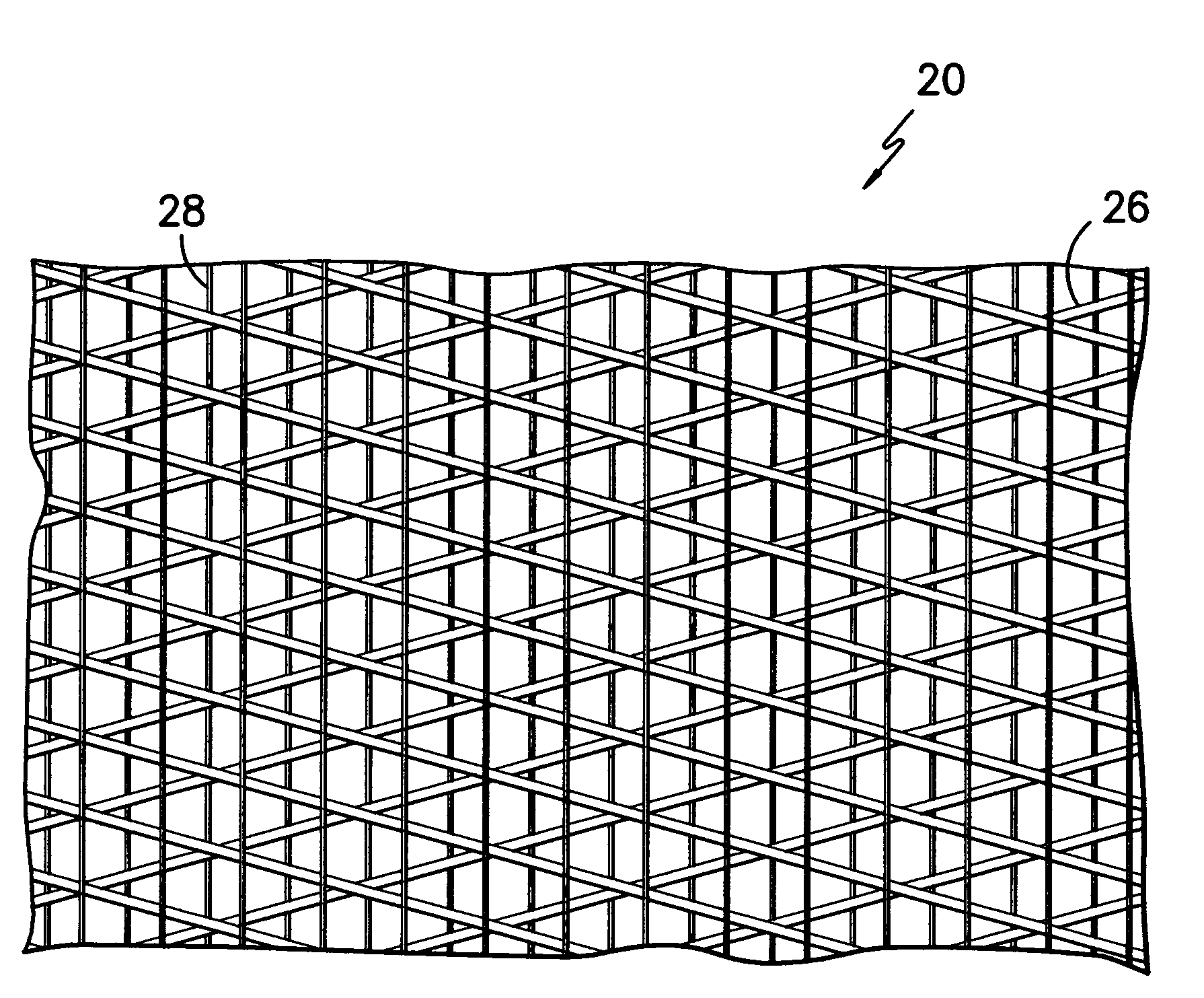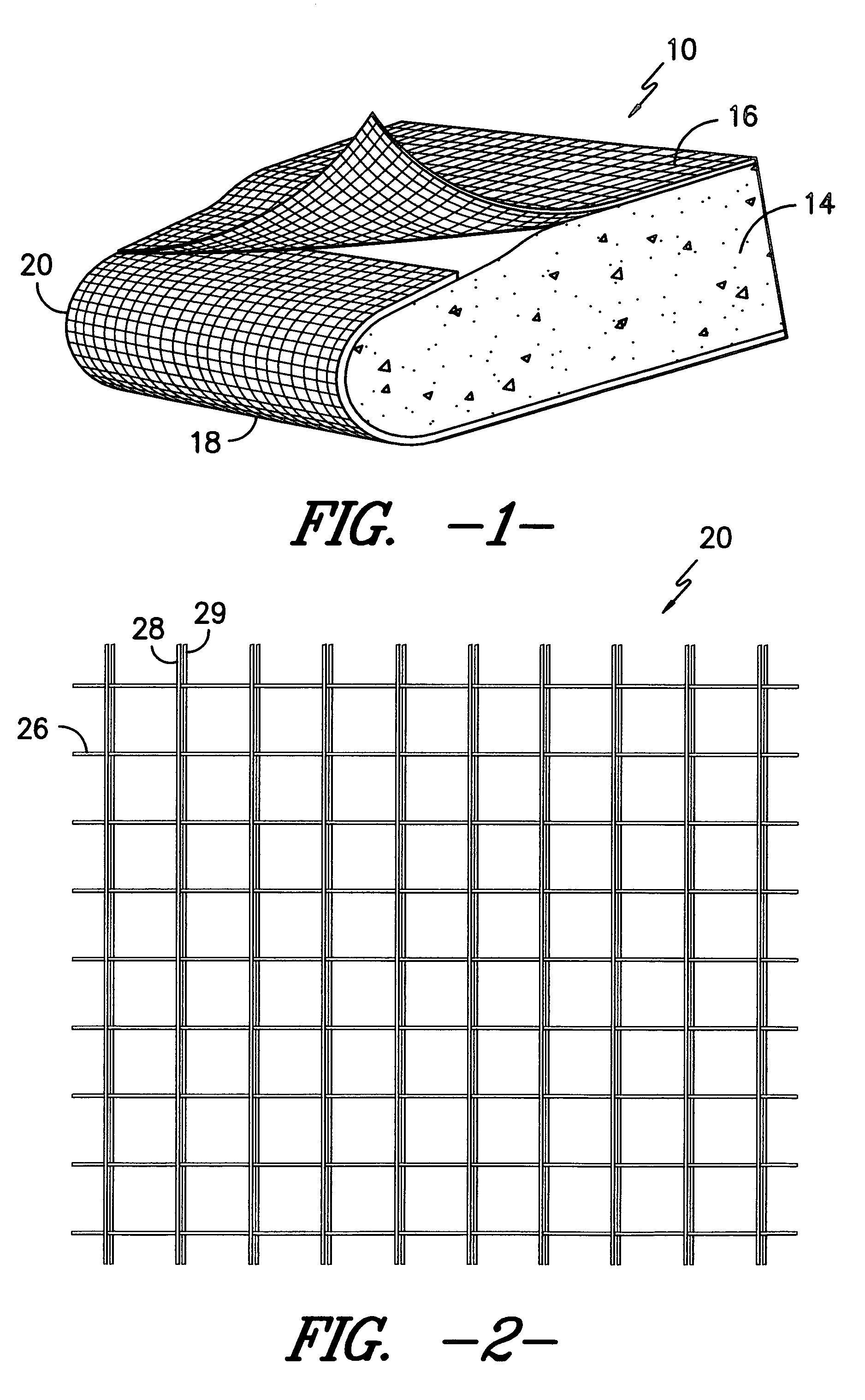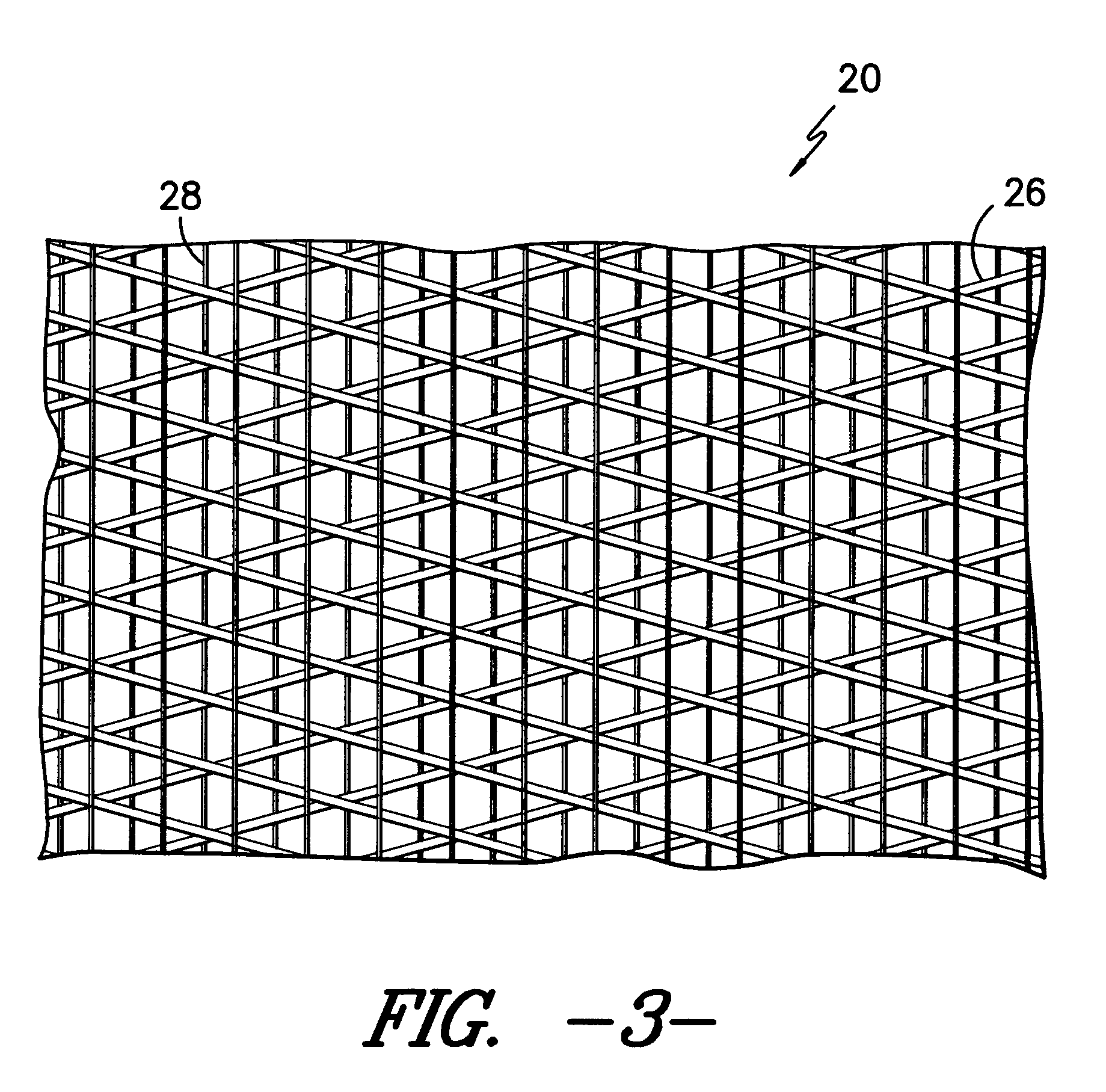Fabric reinforced cement
a technology of reinforced cement and fiber cement, which is applied in the direction of transportation and packaging, synthetic resin layered products, chemistry apparatus and processes, etc., can solve the problems of degradation of fiberglass yarn used in reinforcement fabrics, lack of resistance to chemical attack from cement ingredients, etc., to reduce the degradation of reinforcement fabrics due to alkali attack, reduce reducing the effect of elongation
- Summary
- Abstract
- Description
- Claims
- Application Information
AI Technical Summary
Benefits of technology
Problems solved by technology
Method used
Image
Examples
example # 1
EXAMPLE #1
Monofilament
[0032]Nucleator concentrate (DMDBS) was made by mixing powdered nucleator with powdered PP resin with an MFI of 35 (Basell PDC1302) in a high speed mixer at a 10% concentration, extruded through a twin screw extruder at an extruder temperature of 240° C., and cut into concentrate pellets. The concentrates were let down into two PP resins: the first with an MFI of 12–18 g / 10 min (Exxon 1154) and the second with an MFI of 4 g / 10 min (Exxon 2252) at a level of 2.25% to give 0.225% (2250 ppm) nucleator concentration in the final polymer. This mixture, consisting of PP resin and the additive nucleator, was extruded using a single screw extruder through monofilament spinnerets with 60 holes. The PP melt throughput was adjusted to give a final monofilament denier of approximately 520 g / 9000 m. The molten strands of filament were quenched in room temperature water (about 25° C.), and then transferred by rollers to a battery of air knives, which dried the filaments. The...
example # 2
EXAMPLE #2
Monofilament
[0035]Nucleator concentrate (DMDBS and p-MDBS) was made by mixing powder phase nucleator with powdered PP resin with an MFI of 35 (Basell PDC1302) in a high speed mixer at a 10% concentration, extruded through a twin screw extruder at an extruder temperature of 240° C., and cut into concentrate pellets. The concentrates were let down into a homopolymer polypropylene resins with an MFI of 12–18 g / 10 min (Exxon 1154) at a level of 2.25% to give 0.225% (2250 ppm) nucleator concentration in the final polymer. This mixture, consisting of PP resin and the additive nucleator, was extruded using a single screw extruder through monofilament spinnerets with 40 holes. The PP melt throughput was adjusted to give a final monofilament denier of approximately 520 g / 9000 m. The molten strands of filament were quenched in room temperature water (about 25° C.), and then transferred by rollers to a battery of airs knives, which dried the filaments. The filaments, having been drie...
example # 3
EXAMPLE #3
Monofilament Yarn
[0038]Nucleator concentrate was made by mixing Millad powder with powdered polypropylene resin with a MFI of 35 in a high speed mixer at a 10% concentration, then extruded through a twin screw extruder at an extruder temperature of 240° C., and then cut into concentrate pellets. Concentrates were made of both Millad 3988 (DMDBS) and Millad 3940 (p-MDBS). These concentrates were let down into polypropylene resin with MFI 12–18 at a level of 2.2%, to give 0.22% (2200 ppm) nucleator concentration in the final polymer concentration. This yarn was extruded through a single screw extruder at a temperature of 490° F. and extruded through a dye into a water quench bath. The quenched fibers are wrapped over four sets of draw rolls and passed through three ovens in between them in order to draw the fiber and impart the final physical properties. The temperatures and roll speeds are given in the table below.
[0039]
TABLE #3Yarn Samples with Specific Nucleators AddedNuc...
PUM
| Property | Measurement | Unit |
|---|---|---|
| shrinkage rate | aaaaa | aaaaa |
| shrinkage rate | aaaaa | aaaaa |
| temperature | aaaaa | aaaaa |
Abstract
Description
Claims
Application Information
 Login to View More
Login to View More - R&D
- Intellectual Property
- Life Sciences
- Materials
- Tech Scout
- Unparalleled Data Quality
- Higher Quality Content
- 60% Fewer Hallucinations
Browse by: Latest US Patents, China's latest patents, Technical Efficacy Thesaurus, Application Domain, Technology Topic, Popular Technical Reports.
© 2025 PatSnap. All rights reserved.Legal|Privacy policy|Modern Slavery Act Transparency Statement|Sitemap|About US| Contact US: help@patsnap.com



